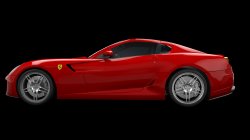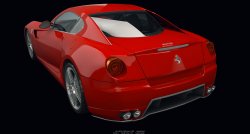How's being one of the best DAW workstations out there "irrelevant"? It's one of the quietest, if not THE quietest workstation out there, and the specs of which are able to be one of the best DAW workstations out there.
The DAWs don't NEED to be OpenCL capable, but it's software, that the Mac Pro excels at.
And you're continually ignoring the fact that the second GPU has absolutely nothing to do with DAW software, and never will because CUDA and OpenCL are not audio oriented APIs.
Furthermore, even though the nMP has two GPUs, the second one is restricted to OpenCL workloads only (unless you boot into Windows). So it's not even useful for modelling or rendering, unless your renderer supports OpenCL, and I can count the number that do on a single hand.
Even the whole "quiet PC" thing doesn't matter these days. Just buy 4 pin PWM fans and invest in a decent motherboard that supports them properly. I built such a system for a friend two weeks ago, and the fans don't even spin until the machine is under load (with an SSD and passive PSU, the machine is totally silent until it's placed under load). It's hard to make a computer any quieter then dead silent.
Again, you seem to totally disregard the fact that Dyson is using the NMP for modeling, as in the video.
I stand by my original statement. You're statement is ignorant. It's a killer machine for DAWs, and evidently works great for what Dyson uses their for.
You want the facts? Fine, here are the facts:
1) The software pictured is Modo 801. It is a CG modelling application, not a CAD oriented package. You do not design a vacuum cleaner in Modo because Modo lacks the precision required to do so. You would want to use CATIA or Siemens NX instead, which is what Dyson uses. The shots shown in the Dyson video are for a marketing render at best, with data being imported from another CAD application.
2) Paul Beards himself (the guy in charge of quite a few Dyson renders) uses Maxwell Render. Maxwell is a heavy CPU bound application. It produces brilliant and physically accurate renders, but it's dog ****ing slow. You would not believe how insanely and utterly slow Maxwell is. If you have the choice to run Maxwell on a render farm or a machine with more then 12 CPUs, you will leap at that chance. It is very unlikely that Dyson is using the nMP for rendering.
At best, they're using that machine to texture and material various parts inside Modo before shipping them off to Maxwell or some other renderer instead.
Furthermore, you keep clinging to DAWs even though the op has zero such requirements. You're only really proving that this isn't the machine for him. If the op wants to render CPU bound workloads, then the nMP is isn't the best choice because you can buy better bigger machines with options for dual CPUs.
-SC



